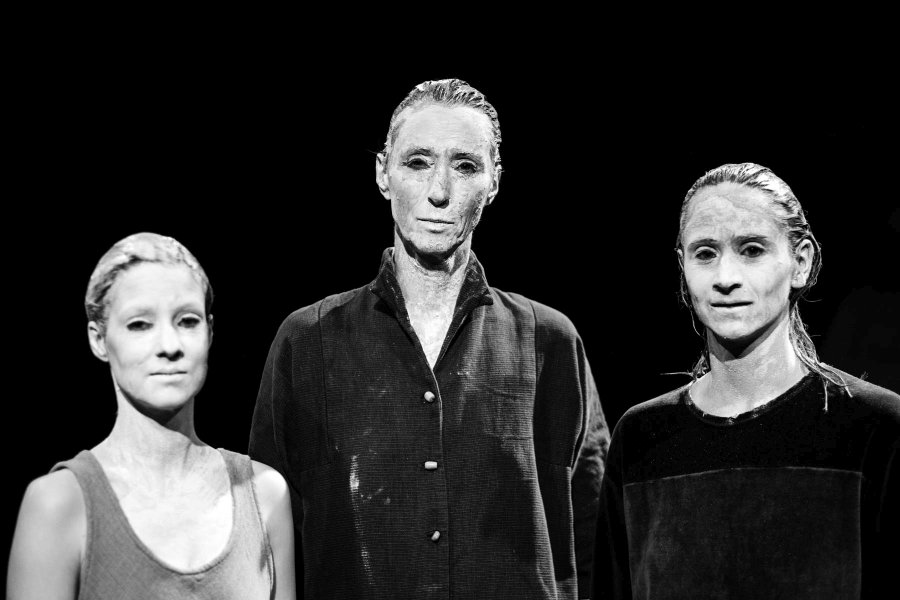
My fellow performers were Kristina Johnston and Thalia Laric for the first dance, and musician Andrea Dicò for the second.
Since the beginning of my dance career the investigation of the subjectivity of dance has been a vital part of my performances. How does one dance objectively? was my question when the press could not find a niche for "the dancer who won't" (the title for a review in the Mail & Guardian in 1986). "The dancer who won't", would not dance the way they did in the classics. The works were seen to be 'too personal', 'not really dance as we know it', or even 'indulgent'.
This facet, this genre of training - the dancer as herself - has many voices running in the background, which even in elaborate interviews were never interrogated. This could be seen as a sign of the particularities of social matter that was not discussed within an era of particular political subjects, where subjectivity was akin to subversion. More about that later.
Whether I perform, consult or teach, I could not really stand for the portrayal of anything or anybody except my own experiences. This implicates me in a quest for a personal signature, not only as artist, but as facilitator, as associate, as fellow parenter (with my son's father), as a political being, as conscious ager and as embodiment of spirit.
Yet (back to performance) even this, the 'audacity' to represent the self, was something that should at least give an inkling to how spectators' point of view would need to be considered. But to overcome the dilemma of assisting spectators to understand my work, my signature had ethical predicaments for me. With resistance I would write elaborate program notes which, in hindsight, caused more trouble than illumination. How does one objectify the subject? Can you see the politics? The conundrum of putting the self as subject on the stage required a defiant stand that would then at least (and unequivocally) take my own side in the execution of the work - subject as subject. Whether or not it being a further station in defiance to tell people how to understand my dances, what the beingness of the dances were, became the unfolding aesthetic.
In time I also realised that the addition of music 'softened' the discomfiture of spectators: 'at least they could enjoy the music even if they could not make sense of the dance.' Profanity. It posed a similar ethical conundrum. One of my goals was to change the status and role of the spectators, which is a political act in itself. Within the sparse period of less than an hour I wanted to use all my faculties to cause a wakeup. Over time, I felt compelled to strip away the theatrical devices that offered a handrail to the work. It was counterproductive to my mission. For instance, look at this. In 1983 the solo performance, Kabedaz 2 consisted of music comprising Frank Sinatra, Meredith Monk, Pink Floyd and Lochner de Kock reading the Afrikaans news on radio, in reverse. Nothing could be more accommodating to a varied audience. It could have been a warning that viewers ought to be prepared for something new, but as it turned out, even with rather packed houses during those years, few people who were there before, attended the next performance. Seen it, been there, done that. Know her.
In time this exploration of subjectivity took on many appearances - and subjective experiences. From the female body as ecology to archival depictions of what my body had undergone, (such as video footage of theatre operations on my cancer cells projected over the dance), over 38 years of performance practice, a particular resilience of honest embodiment of the moment accompanied me loyally. See Chthonia in 2015.
In passing, the subjective was also the main feature of my teaching. The truthful and trustworthy body requires a particular approach, a technique that is not enforced by yet another school of thought, but rather by the thought that one brings closest to one's being, an ontology that is uncompromisingly on the side of the dancer - one who strives for the impeccable pursuit of signature - first. These extra-pedagogical or extra-theatrical activities were not only my practice itself, they became the aesthetic of a new personal and political examination, most often as solo work - a dance with a social conscience that included that of the dancer's impulse.
Let me just to have a word on behalf on the spectator. Imagine their experience is ever a projection of an exterior life. They will have difficulty finding any meaning in this form of dance. In fact, it would most likely infuriate them. But the moment their main trajectory encompasses a view as belonging to the exterior world, as much as to their own interior life, the dance will be theirs. It will become a subjective experience, they will welcome the discomfort, praise the daring and appreciate the work that goes into making the interior life of citizenship visible and meaningful in a new way.
Tetsuro Fukuhara, a veteran Japanese performer during this event in Cape Town: "If the spectators do not leave in a huff, you have not gone far enough."
Extreme Subjectivities was therefore an exposé of our/the/a subjective experience. There were many subjectivities on the floor and this included that of the spectators as such.. a discussion for another time.


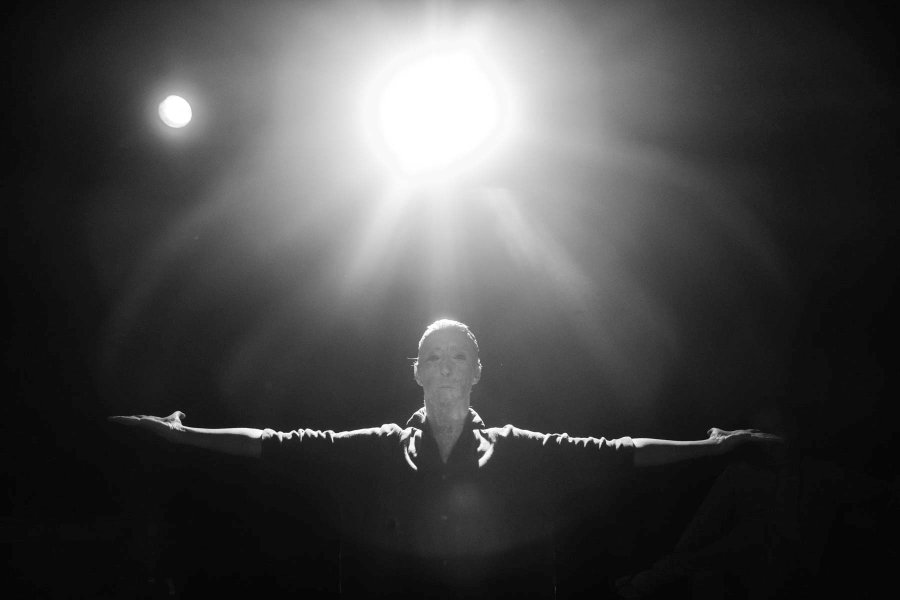



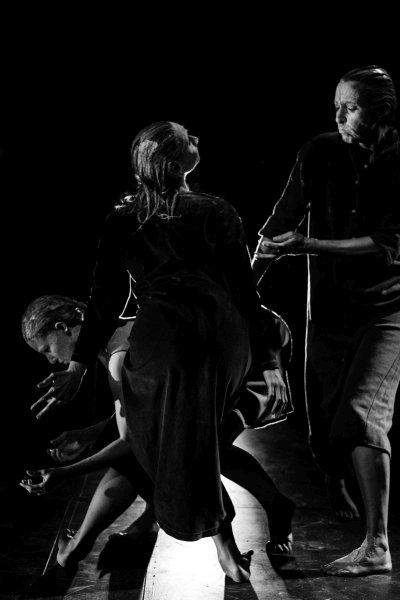


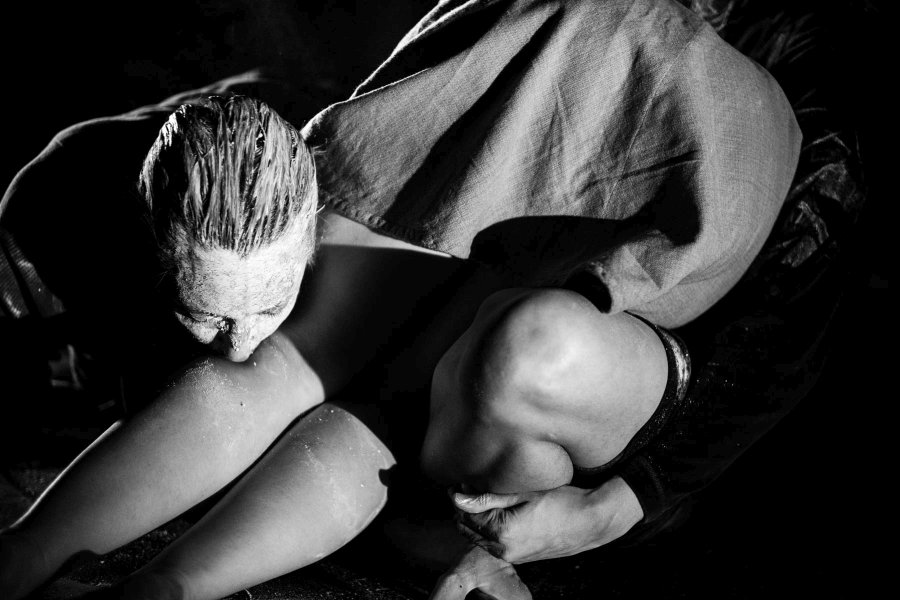
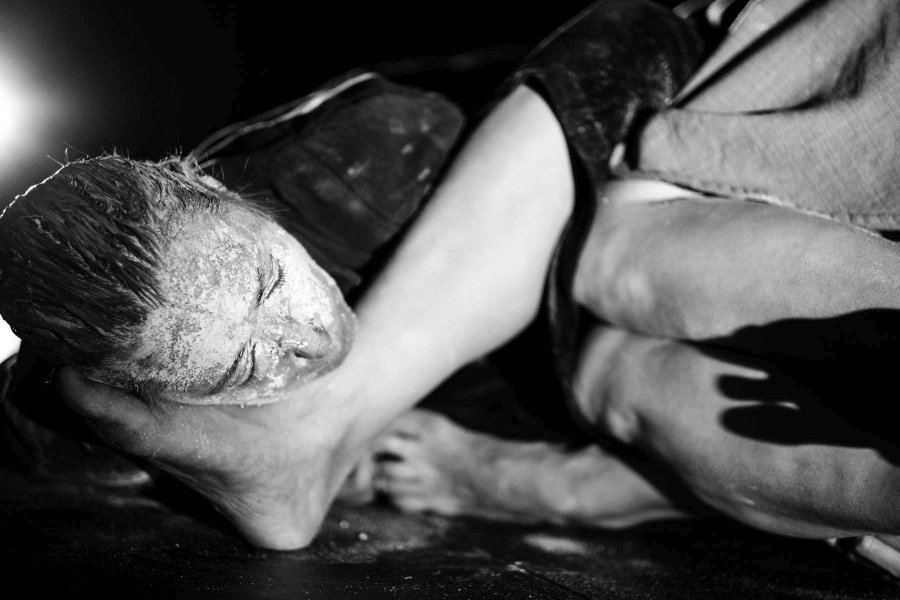

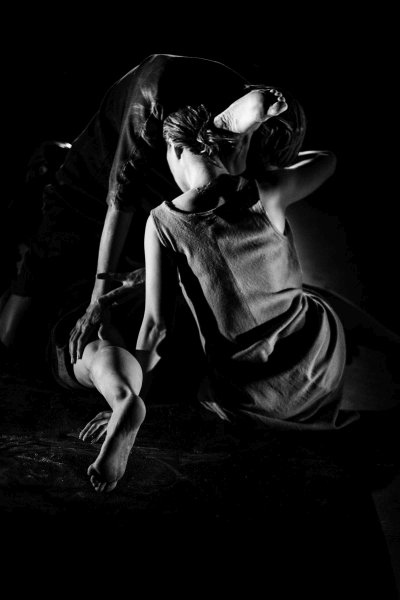
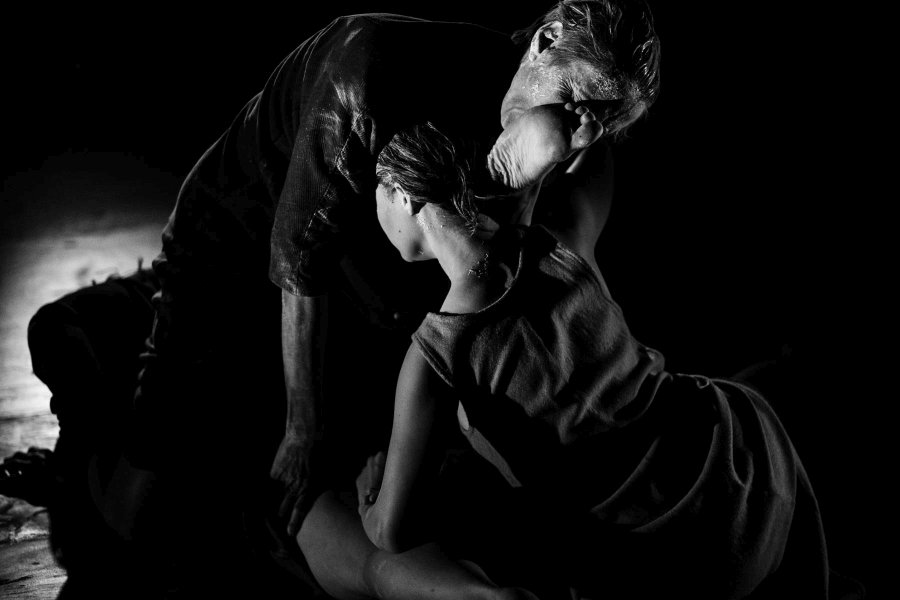
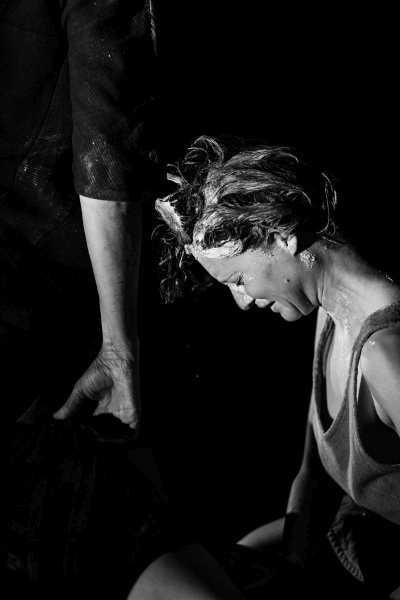
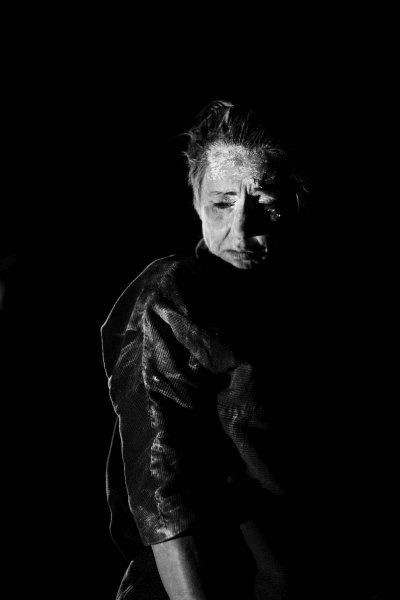

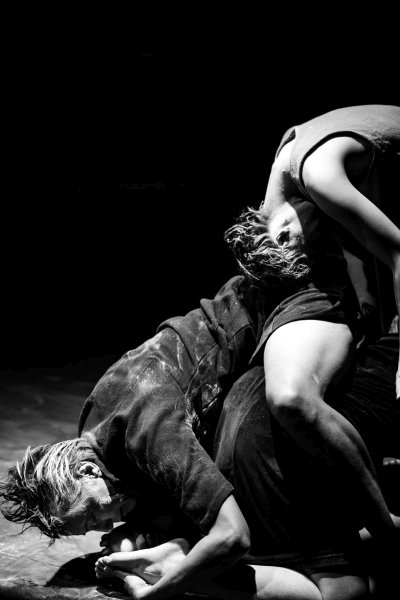
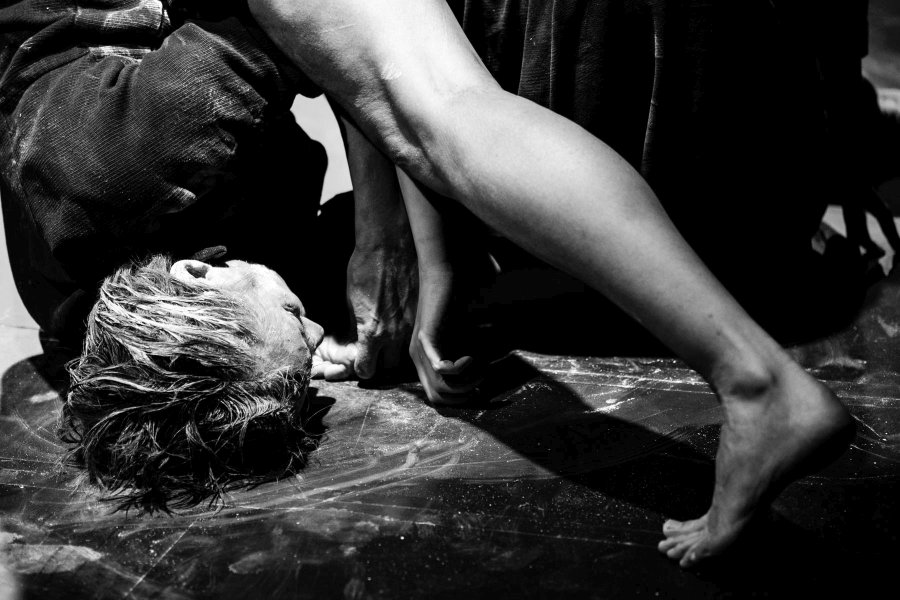


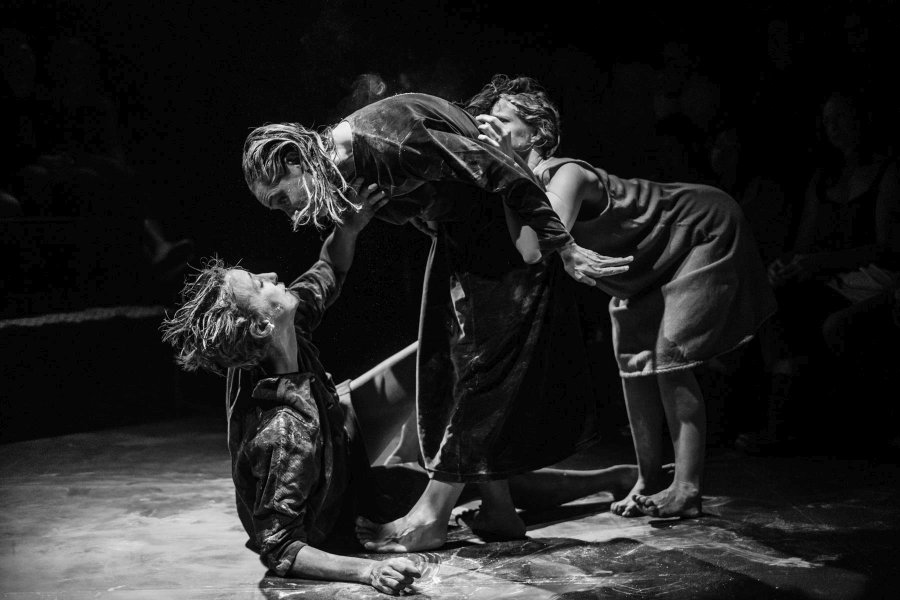

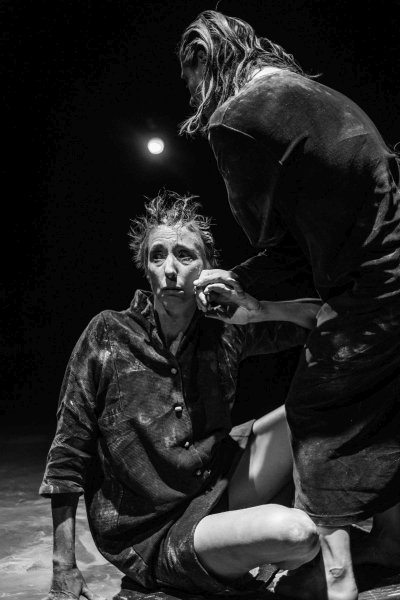


During the first rehearsals with Thalia and Kristina we were gathering our varied experiences of subjective movement as a group. An important feature emerged. The element of witnessing ourselves (while in extreme subjective embodiment of the self, and in relation to the other) offered a particular aesthetic to the work. Of course, over the cumulative years of doing this work, mostly as ethno-autobiography, a particular and growing, maturing 'eye' on the self was ever present. Rehearsing, this eye was awake, while submerging into the subject of body, psyche, other bodies, rising emotional content, extremely gentle as much as violent acts of interaction. It was a non-judgmental, neutral and all-encompassing eye, seeing the facticity of every moment. It 'listened', was empathic in a detached manner, humble to the creation, always on time, open to the 'mythical' significance of the moment, confident, generous and courageous. This without having any particular attachment to comparisons, brilliant ideas, sympathy, antipathy, being 'ahead', illusory, over confident, extravagant, reckless, mechanistic with technique, overdoing, deceptive of a 'story', self-disparaging, doubtful, confused and fearful or whether what we executed be good or poor.
At the start the witness was literally stepping back from the main activity of the other dancers. That dancer stood upright, at ease and with total attention to what was happening on the floor. With time this role evolved. At any particular moment, when the dancer comes into the space of witnessing - a natural phenomenon - the place of witnessing could also be within the dance, deeply embedded in contact and invention, albeit with the mind slightly shifted, to literally 'Look and See' what was happening, before further submergence into the dance.
A note on the psychology of witnessing. In developmental movement pattern theory, this state of extraction to perceive outside the self occurs at a very early stage. The mother's face and the breast are some of the first objects that position themselves outside the subject. The exercise revisits that state. It makes known that there is a self, primarily, and then a revolving world of otherness following.
The belief in the self as existing autonomously, with a sovereignty of ontology while engaging with the world (other dancers) lies at the fundamentals of this technique. It suspends culture, tradition, known spaces of existing familiarity to rather celebrate the older patterns of being, uninhibited, open, unrestrained, abandoned of rules, frank, even immoral.
Due to the extraordinary originality, inventiveness of the interior spaces and their representation in the body-mind, one seldom receives commentary that would be conducive to the further exploitation of this technique. It all resides within the performer's self-experience and constant self-examination. Had I known this in 1983 I wonder what would have transpired. At that age, my 20's, I was subject to my own identity formation, needing affirmation of a kind that would have to understand this genre as an autonomous art form, which no one was able to provide then. Nevertheless, the sense of identity that still transpires from this work over 38 years, is on a par with that which meditation practices provide. The loss of self, emptiness, the universality of a tiny movement, the ability of the mind-body to embody the struggles and vulnerabilities of humankind, the glories of illumination, death. All this as a daily practice assists me in walking the earth differently.
There is no heroism in this artistic practice. There is no heroic character. The roles and participation evolve more rapidly than the eye hopes to interpret what is happening. We are common citizens in a social context, engaged in an embodied, episodic narrative without words. Momentarily, the device removes us from the prevailing excesses we experience in our 2018 political milieu that permeates our psyche: we are much caught up with heroisms. Struggle heroes with tainted histories, the poor, mothers, children, (not fathers), resurrected criminals, the exiled, the homed, the dead, the living infiltrate our present with corrupted and corruptible psychic strata. Even in a private and professional relationship such as in psychotherapy we pay to 'overcome' something, 'achieve' something, 'sacrifice' something, 'integrate' (to take possession) something, even 'work through' something. The idea of political struggle to attain freedom has various resonances and relevances of an underlying heroism, reflecting the collective's fantasies about the nature of politics. Even the interpretations of major political events have their own beatified, heroic thrusts, disallowing any gesture that says "yes, but." Everybody is a potential revolutionary angel. In this process the past is denied, twisted and rewritten to prove purity's autonomy. In Extreme Subjectivities this genre weathers this, may I say 'lazy' tendency, repels against the objectification of the body for heroic targets and offers an honest emotionality grounded in the subject. We are fucked by politics, tradition, culture, religion, gender, race, class and everything excessive materialism bends us backwards for. In South Africa political correctness would be this work's farthest.
This theatre, Extreme Subjectivities, ex-volves (versus involves) these excesses. Entitled and acclaimed voices are removed from an autonomous ontology with a better chance of silence, integrity, clarity of thought, the heart of the thought, a modulation of feelings outward as well as inward towards more sustainable personal maturation.
In the practice of the alchemist, matter follows three stages: separation, purification and coagulation. Rewardingly, the result of alchemy as part of this practice brings the performers in touch with these principles. The outcome is an undergoing social development alongside the development of character; the movement and tension - the articulation - between the individual and the revolving artistic presence coins the crucible of what it means to bring your subjectivity into a realm where it would not be welcome ordinarily.
I am glad to have shared this dance with two other fellow walker-dancers on this path. My journey since 1980 was to rescue myself from self-alienation through a critical and uninformed public (which includes critics of the time). This, while busy with crucial identity formations to a location of what is public about my private and personal conflicts, anxieties and even ecstasies. The idea is to move closer to catharsis and self-knowledge rather than away, in the service of a richer social tray of possibilities. To physically and spiritually contract this with other dancers, is nothing short of privilege.
The second performance, improvised dance and music, was with drummer, anarchic noise maker, sound artist Andrea Dicò. Not dissimilar from the dance above, here the collaboration between a musician and dancer aims at the edge of creativity between two artists. (It so happened that I met Andrea on the Edge of Wrong Festival some years ago.) The 'lawless' element was inherent in this alliance. The points of touching were rare to start with, with resistances of giving and taking, a calibration of listening per se, as if truly meeting a person one was bound to be with, healthily, against your will. Over time the meeting placed new definitions of partnership onto the collaboration. A refined sophistication of partnership materialized. It was as if we rose to something unified. Similarly, we disappeared into dust.
While writing this text, excerpts from My African Heart kept nudging in the back of my memory. Here is an extract. It is 1993. My unborn child's father has just confirmed that we will attend Chris Hani's funeral. I am pregnant and knew that, within myself I would have to reconcile my fear with the event, and go. The conversation is with the unborn child, who also responds.
My fear stands in the way. I must prepare for this journey and this funeral. Here I place myself in the middle of this house where I feel all the phases and varied intensities of this particular fear and I know my body will begin to shake. Soon.
You resonate with your unique fear.. waves of shivering vibrations, your breath becoming untraceable, your muscles trembling deeper into right hardness until they burn with fear, a force that refuses acceptance, builds up resistance but ultimately pushes you over onto the floor, your neck exposing your throat like a terrified animal and at the height of the spasm you see the vision clearly. We will be walking through a crowd of chanting people whose song now comes into your breath in rhythmic falls:
Hamba kahle mkhonto.Wemkhonto
Mkhonto wesizwe..*
A person undergoing great change is beautiful.
We roll over, I see and feel the floor breathe in and out.. all is molten, formless and in flux.
The images of Lindsey Appolis on this website for Extreme Subjectivities speak for themselves.
This video and text is by Kristina Johnstone, a fellow movement researcher commenting on Extreme Subjectivities. The occasion was an artistic research showcase at the Wits School of Arts on 4 May 2019. The video was created with Thalia Laric.
